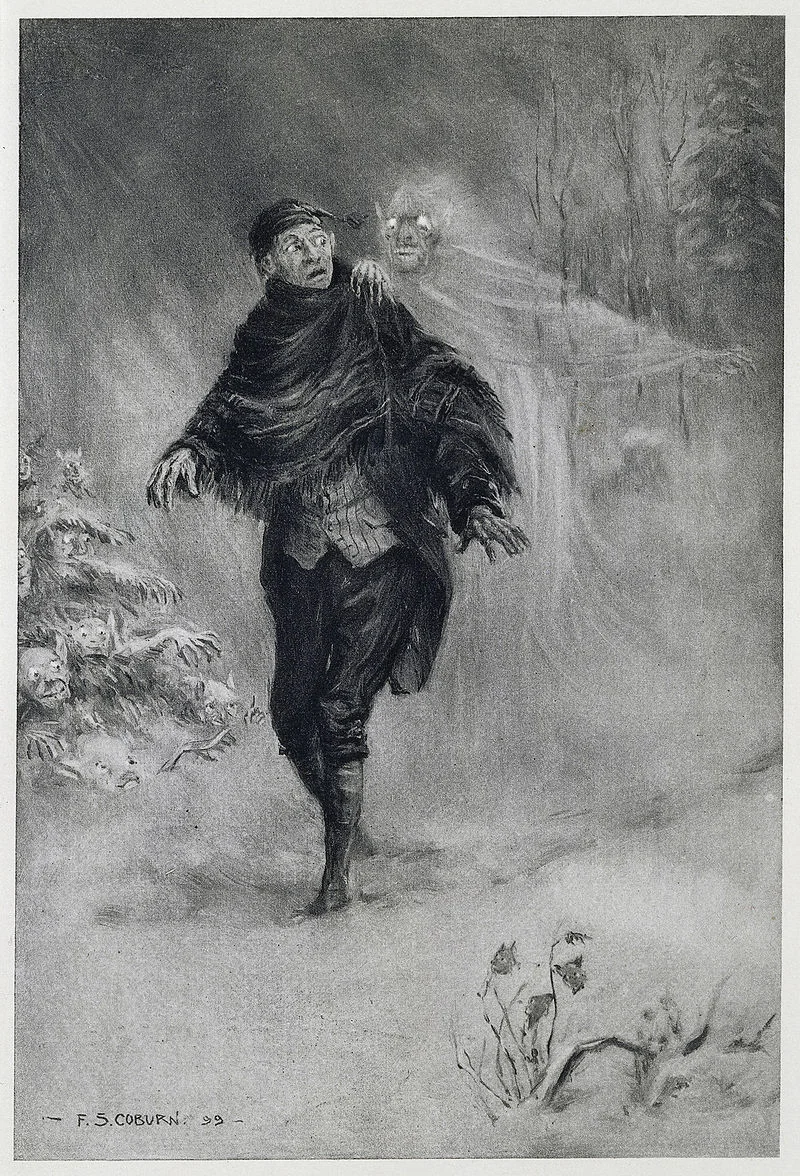The New York University (NYU) application essay reads: ‘NYU is global, urban, inspired, smart, connected, and bold. What can NYU offer you, and what can you offer NYU?’ Whatever you might offer NYU, NYU offers you a place in the elite of haunted campuses, along with a very good scare above and beyond its annual tuition rate of $45,000.
Founded in 1831, NYU has over 20,000 souls buried beneath its main campus. The land comprising Washington Square Park, NYU’s Greenwich Village location, was a ‘potter’s field,’ a graveyard for the indigent. It also served as a mass grave for the thousands who died in the Yellow Fever epidemic of the 1820s. The Old University building, one of the first buildings built on the campus, was haunted by a young artist who committed suicide in one of its turrets.
The former Asch Building, now known on the NYU campus as the Brown Building, was where on 25 March 1911the Triangle Shirtwaist Fire took place killing 146 garment workers, mostly young girls. The deaths occurred on the 9th floor. Today the 9th floor of the Brown Building contains the Center for Developmental Genetics; some have heard rustling noises, shrieks of desperation, and, on occasion, smelled smoke.
NYU’s Provincetown Playhouse on McDougall Street is where Eugene O’Neill got his start on the road to becoming a Nobel Prize winning dramatist. O’Neill’s road ended with his passing on the 4th floor of the Sheldon Hotel, which is now Boston University’s Sheldon Hall. Current residents claim the elevator stops on the 4th floor often for ‘no reason,’ ‘lights are dimmer there than any other floor,’ and students often hear knocks on their doors only to open to nothing.
At Cornell, Hiram Corson, a popular professor of English (1870-1903), claimed little difficulty communing with deceased authors and poets including Walt Whitman, Alfred Tennyson, Henry Wadsworth Longfellow, and Robert Browning. He added a whole new dimension to the Dead Poet’s Society. Cornell is rife with ghosts: there is a malicious spirit haunting the shelves of Olin Library; Jennie McGraw-on occasion-visits the clock tower; tuxedoed ghosts have been encountered by the staff of Willard Straight Hall; the ghost of Alice Statler whose name is on the Hotel School Auditorium is said to have ‘physically grabbed’ a Statler employee; and a group of students and their dog-killed in a 1967 fire in the Ecology House- often make their presence known by footsteps, strange lights, and an occasional phantom bark.
The University of Virginia currently reports that two ghosts haunt the Alderman library. One, Dr. Bennett Wood Green a Confederate surgeon, willed his book collection to the library and now haunts it. Students report footsteps and a strange presence if in the collection after midnight. The second ghost, a physician who made house calls on the Garnett family in Fredericksburg, VA haunts the Garnett collection. One can only imagine the ire raised by an overdue book.
Closer to home, CSU Channel Islands was built on the site of the former Camarillo State Hospital (1936-1997) in which over a 1,000 patients died. Investigators of the paranormal have found the grounds of CSU CI active with visitations from the supernatural. Doors lock themselves, lights flicker and strange cries emanate from nowhere.
Cal State Fullerton also has its share of ghosts. In the Phi Kappa Tau Fraternity house, located on the corner of State College and Yorba Lind Blvd, the ghost of Wendy Osborn, who was allegedly killed in the ravine abutting the fraternity, turns water taps on and off, flickers the lights, opens cabinets, and jumps on beds. Moreover, in 1976, in the basement of the Pollak Library South, a janitor went on a five-minute shooting spree killing seven. Today, doors slam in the basement restroom, and paper towels magically dispense flittering into the trash.
Though University of Pennsylvania lacks the ghostly visits of NYU, BU, Cornell, UVA, CSCI, or CSUF, it does contain the Penn Ghost Project. Here the study of ghosts, parapsychology, is a serious enterprise. Jeff McDaniel, a professor of religious studies and a member on the project asserts: “Even if ghosts are not a physical reality, they’re a sociological reality.” Perhaps Eugene O’Neill would agree.

